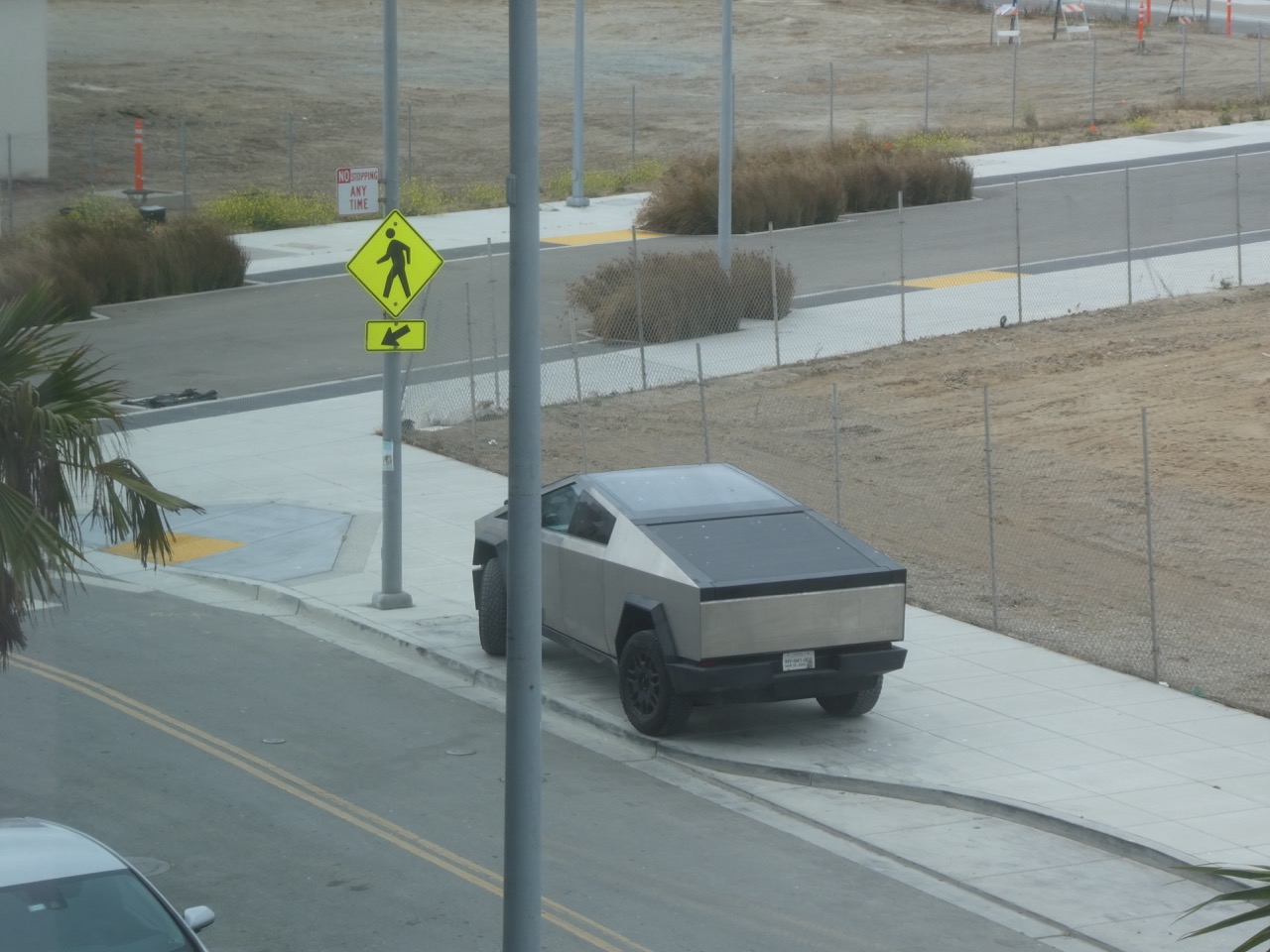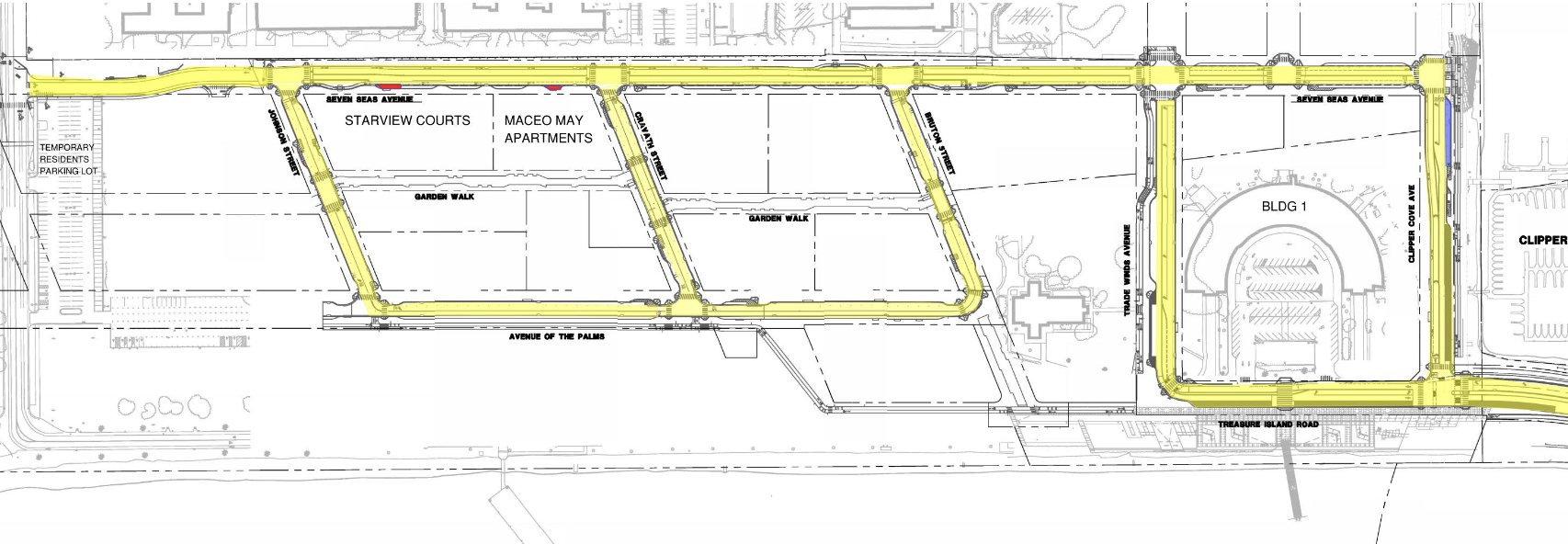Parking on Treasure Island
Treasure Island will eventually have about 25,000 people. Treasure Island is about one square mile (and much of that will be open space). People are great. I can’t wait to see more neighbors share this beautiful, conveniently inconvenient corner of San Francisco. But we just don’t have room for 25,000 cars: not parked on our streets and not on the one-lane approach to the Bay Bridge.
Parking Strategy So Far
When most urbanists think of parking, they think of the late Donald Shoup, who I was lucky enough to meet in passing at UCLA. His famous work is a book titled The High Cost of Free Parking. That was checked out from the library so I settled for Parking and The City, an essay collection Shoup edited with an abridged version of his own thesis in its introduction.
In that introduction, Shoup offers a menu of ideas to reduce parking demand.
For example, developers can include bicycle parking spaces and on-site parking spaces for shared cars, offer cash-out programs for commuter parking, and offer free transit passes to all residents of an apartment building (Page 10).
Treasure Island includes all of these measures, at least on paper. It’s actually part of what made me want to move here: fewer cars, less traffic violence and pollution, easy(ish) transit access, with the ability to use a shared car when I need one.
Both of the mostly market rate apartment buildings on the island are parked at about 0.5, or in other words they have about one parking space for every two units. Rather than lease some units with parking and some without, parking is unbundled: rented separately (or sold separately in the case of condos).
Unbundling is a best practice, and actually required on Treasure Island. Households (like mine) that don’t need a car and would have trouble affording an apartment if they were forced to pay for a parking space are able to live here, while households that wish to own a car can do so by paying for the cost of that parking space.
According to a recent survey of construction costs, that space probably cost $20,000 to $30,000 to build (Comprehensive Parking Supply, Cost and Price Analysis, Litman, 2025). Perhaps even more considering San Francisco building costs.
This is in sharp contrast to just about everywhere else in the United States, where housing usually means a single-family home with a driveway, probably ample street parking as well, and if not that then a multi-family building with parking bundled into the cost of rent.
Planners typically assume that all residents come with a car and require enough off-street parking to house the cars. Most residents usually do come with a car, but that is only because requiring plenty of off-street parking ensures that most residents will own a car.
What’s Missing
The trouble with parking on Treasure Island so far, is that the policy frameworks and built environment are set up one way (limit and price parking so our island remains livable and doesn’t get choked with traffic), while new residents are showing up thinking another way (I’ve always had my car and I don’t like paying for parking, so I’ll bring it with me here).
Parking policies for the island are unenforced and not widely known. People park as if it’s the Wild West and there is functionally zero enforcement (even when vehicles block sidewalks or crosswalks), while that “mandatory” transit pass for market rate residents does not actually exist yet and therefore can not be mandated. Our building is also required to provide space for carshare vehicles, but it’s unclear if or when the carshare will actually materialize.
Ew.
In a way, even this haphazard approach is self-limiting: more folks show up every week and the streets are already full (even counting illegal spaces), so clearly something has to give. It’s a frustrating experience for drivers, and a dangerous one for pedestrians when cars block sidewalks and crosswalks.
But again, there simply isn’t the space for everyone to live here with a car. Our off-street parking is pricy, precisely because bringing a car to Treasure Island needs to be an intentional choice, with some people deciding it’s worth it and others deciding to skip the car and enjoy the quick ferry or bus ride to Mainland SF. Those who value ample free parking above all else should probably think twice about moving to one of the most compact, dense, and road capacity constrained new developments in California.
How Full?
I did my own parking study on a Tuesday evening (July 12 2025, a while ago since I meant to write this sooner). Here are the results:
| Block Face | Car Count | Capacity (20 foot spaces, daylighting, rough estimate) |
|---|---|---|
| Bruton S | 13 | 10 |
| Bruton N | 10 | 10 |
| Ave of the Palms E | 26 | 36 |
| Ave of the Palms W | 18 | 0, signed no-parking zone |
| Cravath S | 16 | 9 |
| Cravath N | 10 | 9 |
| Johnson S | 14 | 10 |
| Johnson N | 14 | 10 |
| Seven Seas W | 19 | 6?, parking bays only, currently signed no-parking |
| Seven Seas E | 0 | 0, signed no-parking zone |
| Dirt Lot | 58 | 75? |
So yeah, it’s full. Not counting the informal dirt lot, there are about 100 legal on-street parking spaces in all of Phase 1. On-street parking is obviously useful, but it needs to be managed well. Visitors to the island and its residents should be able to easily find a spot, which requires the right prices to be set (another Donald Shoup dogma). Delivery vehicles should be able to find curb space so that they don’t stop in bike lanes or other locations that compromise everyone’s safety. I especially hope that a few spaces are set aside for car share, and that some sort of provision is made for paid, overnight visitor parking.
What’s Next
First of all, more people. My building is about half full, the building behind mine is likely less than that but getting there, and the two below market rate buildings have been essentially full for some time now. On top of all that, Treasure Island’s first condo building (with gas stoves, unfortunately) will start selling this year. All in this same two block area.
The City is slowly waking up to the need to regulate: slides from June 6th’s Treasure Island Development Authority’s Housing, Infrastructure, Transportation & Sustainability Committee meeting claim that outreach will begin this Fall, with on-street parking legislation by the end of the year and meter installation early next. All on-street parking on Treasure Island will be metered (this has been the plan since the 2011 Final Environmental Impact Report).
Streets with pending parking regulations per presentation
Why all of this wasn’t done before people started moving in, I couldn’t tell you. Another choice quote from Parking And The City:
Because cars must park somewhere, many people think parking behaves like a liquid. If the parking supply is squeezed in one place, cars will park somewhere else. But parking behaves more like a gas; the number of cars expands and contracts to fill the available space (Page 8).
It seems to me that we could have kept that gas contained, while emphasizing the need for robust public transit, by having striping and enforcement ready to go on day 1. Now the city will face an uphill battle trying to re-compress it over the next several months.
Other Select Quotes from Parking And The City
[quoting Lewis Mumford] “The right to have access to every building in the city by private motorcar, in an age when everyone possesses such a vehicle, is actually the right to destroy the city.” (Page 16)
This fixation on a parking space turns many drivers into unscrupulous maniacs. When all else fails, they will pull into any available space in a no-stopping zone, on the sidewalk, or even in an intersection (The High Cost of Free Parking, Chapter 11) (Page 23)

